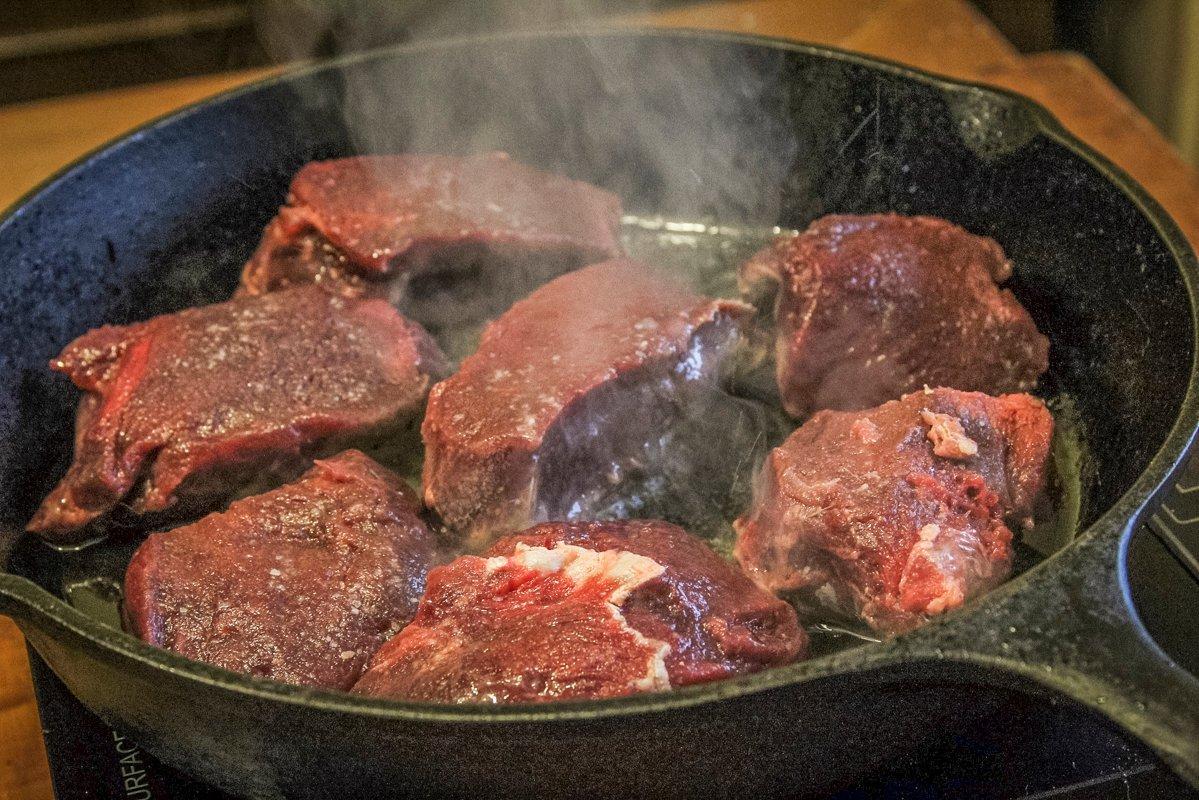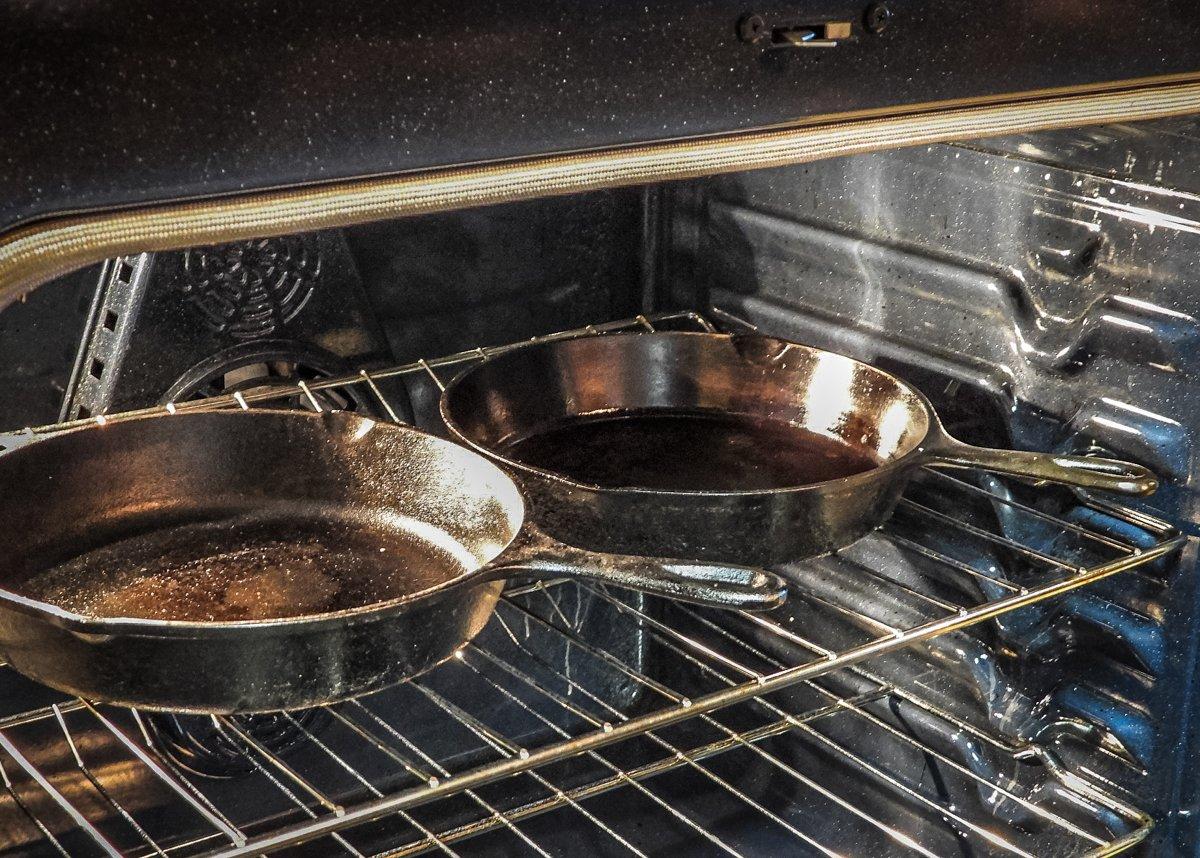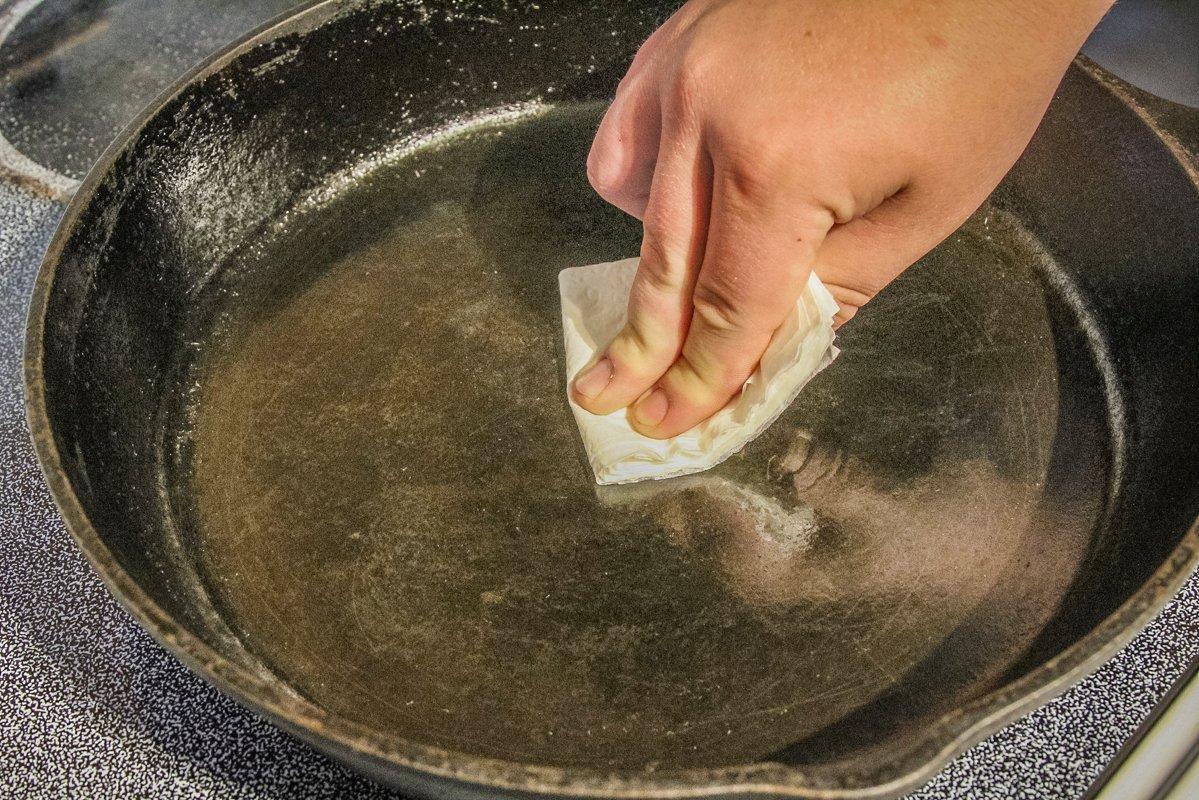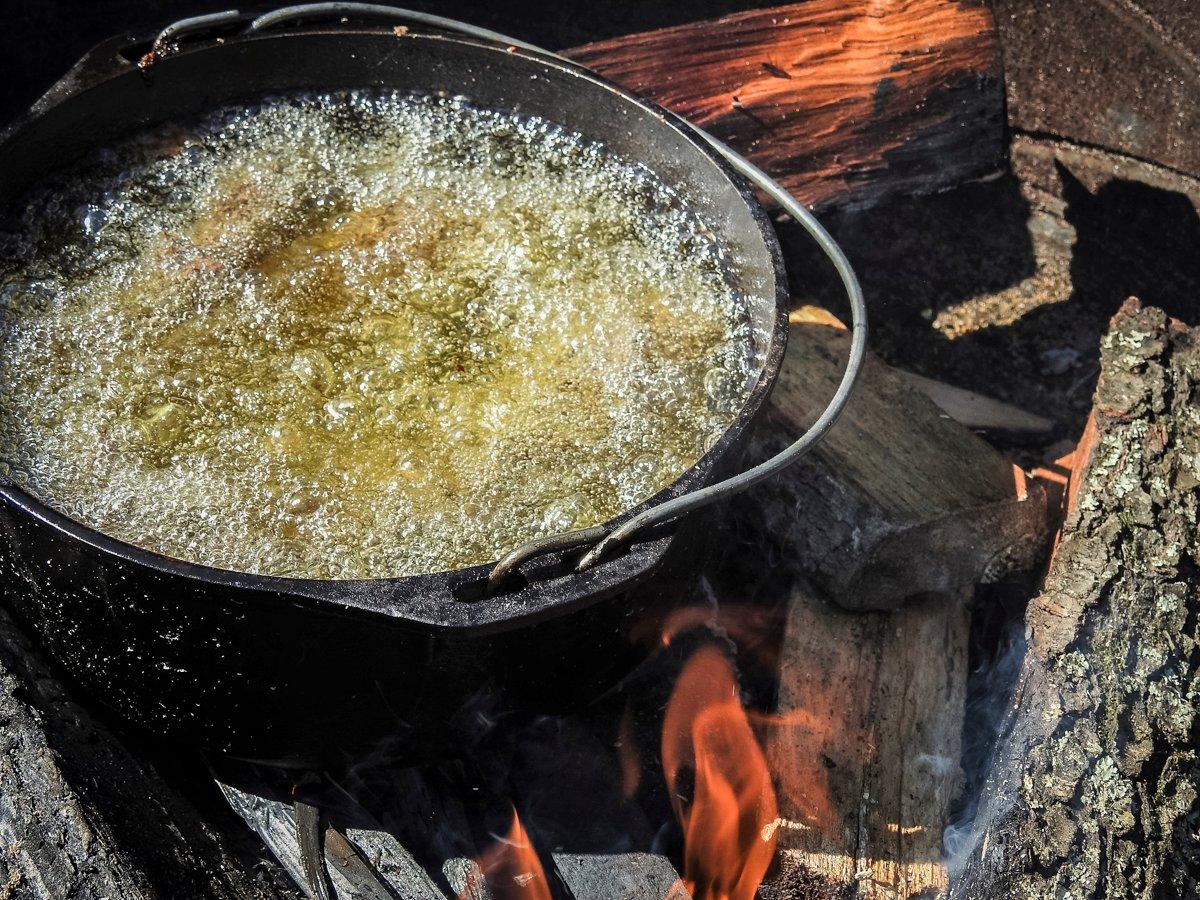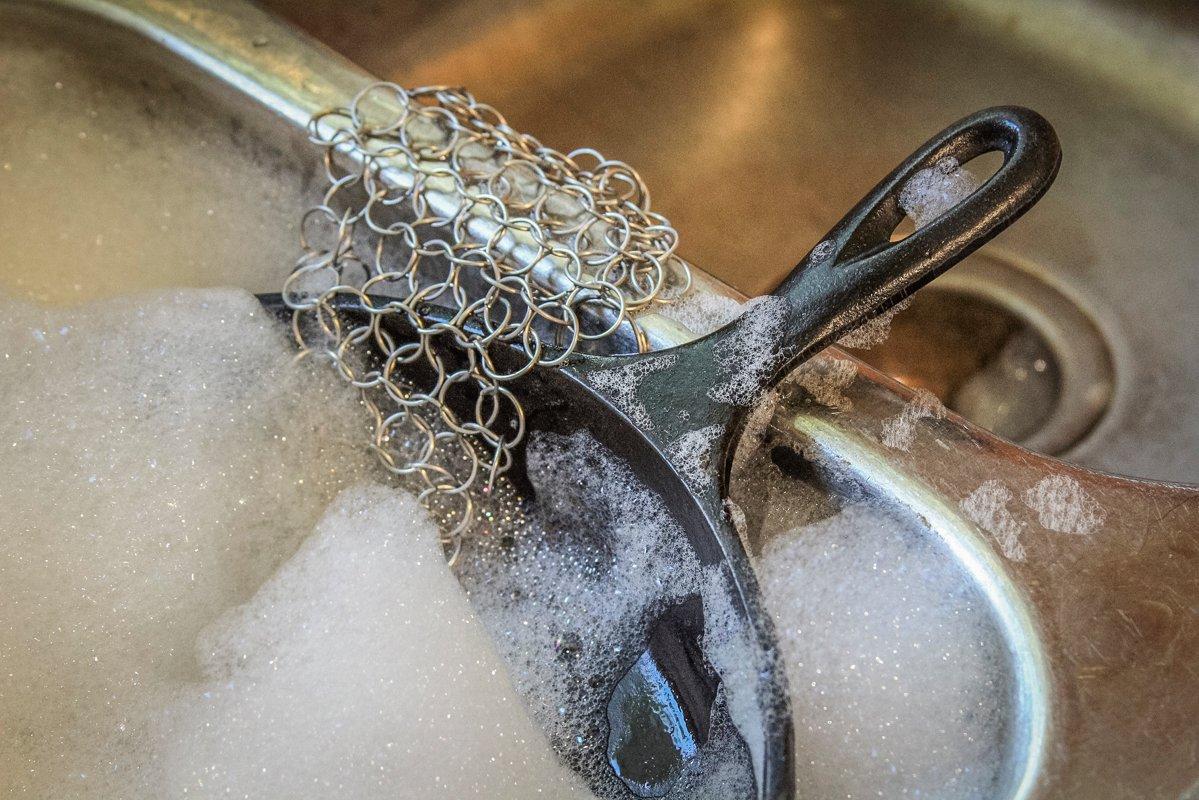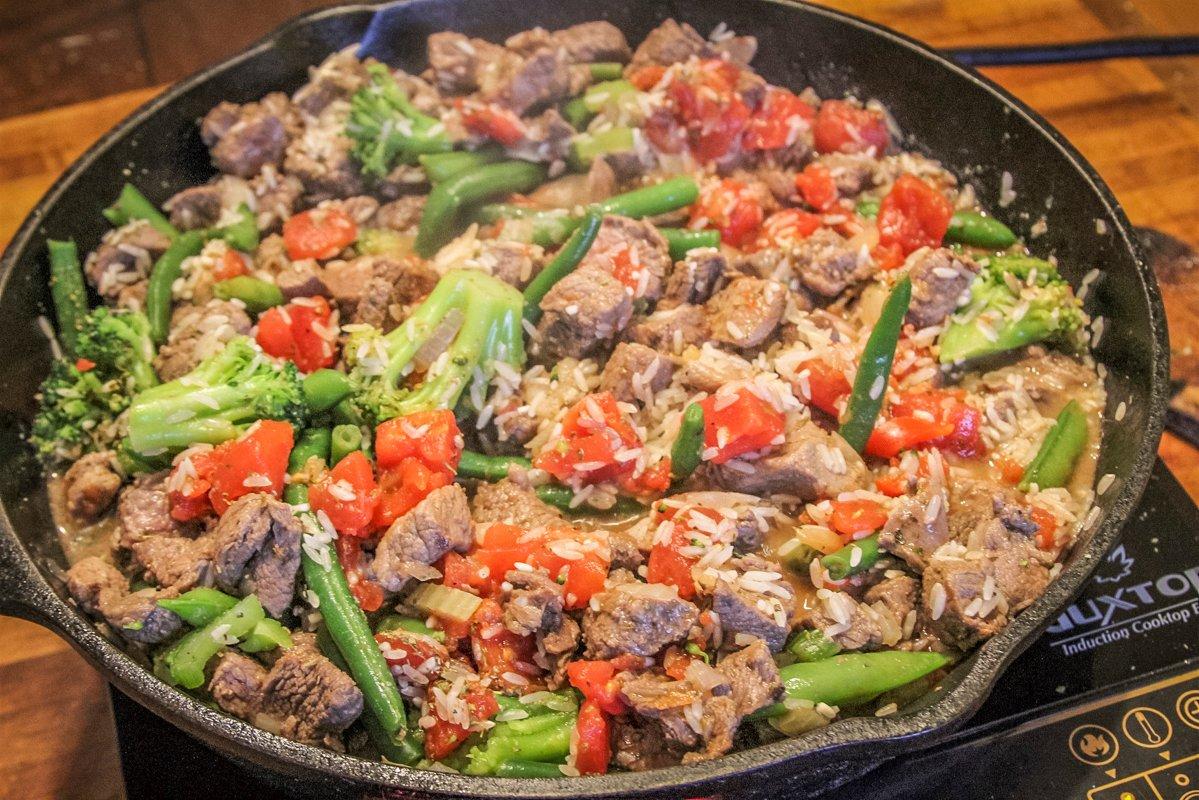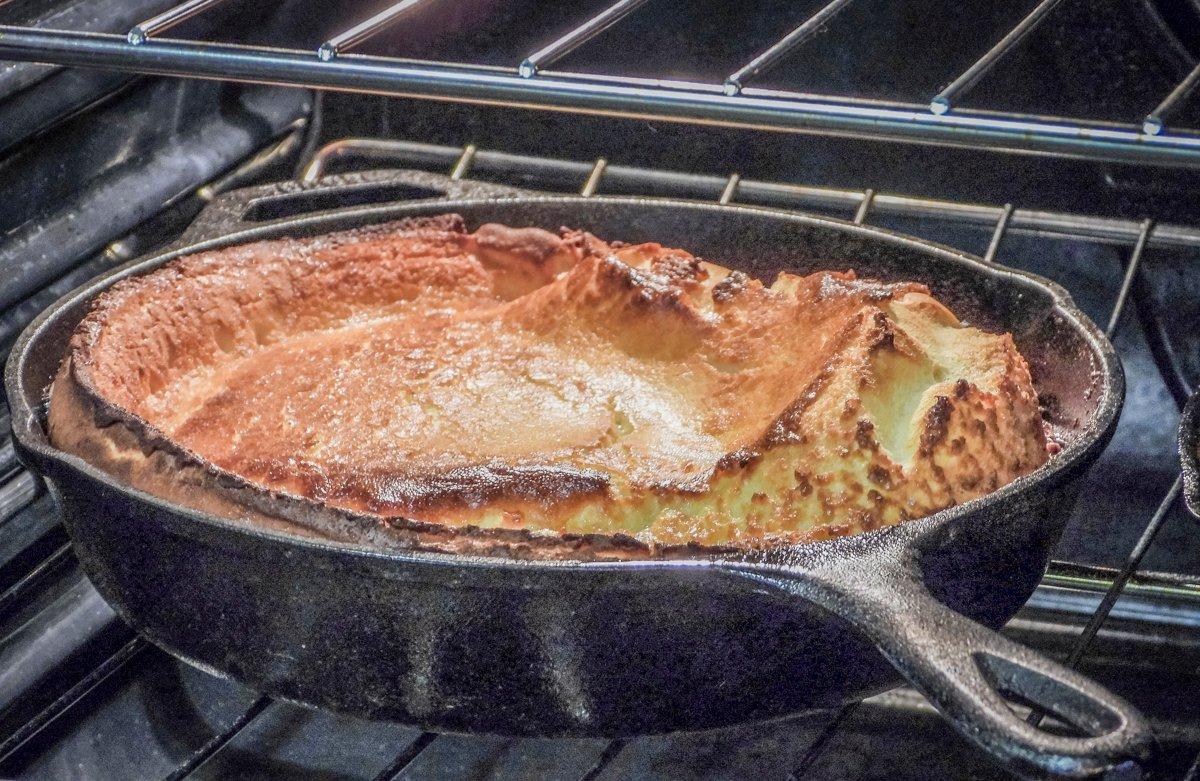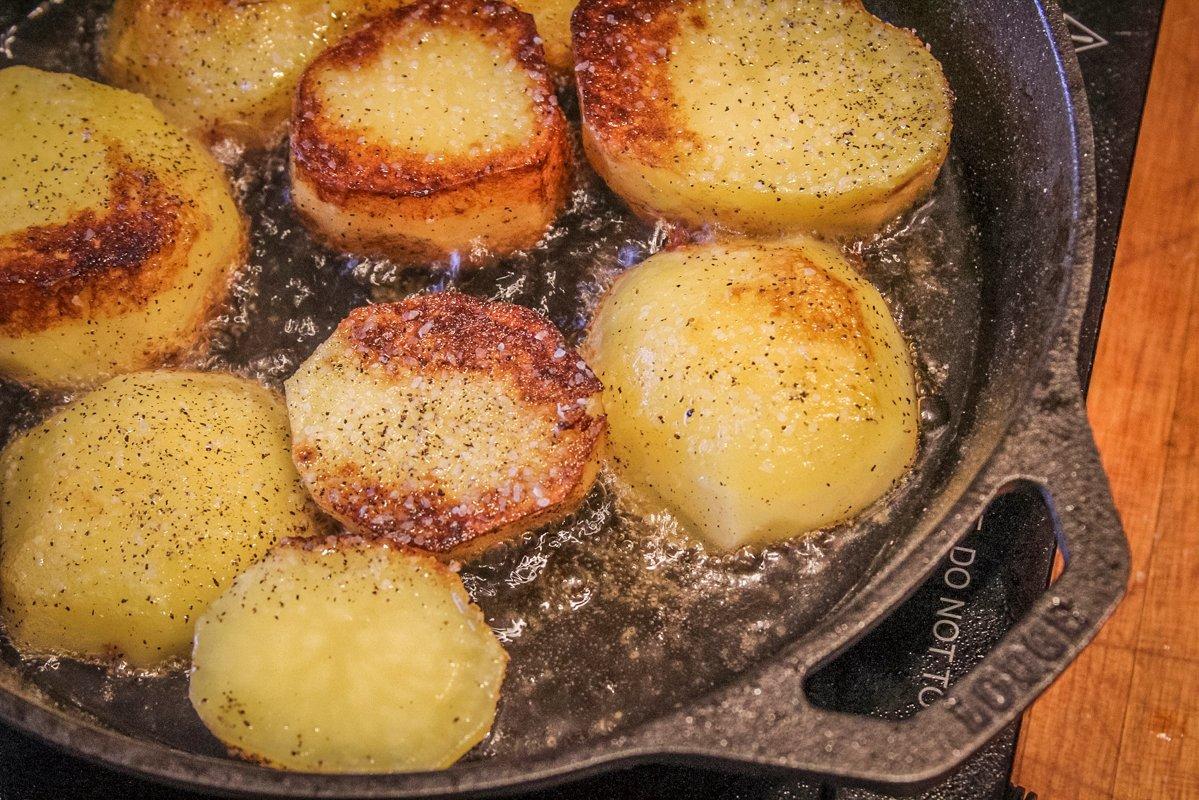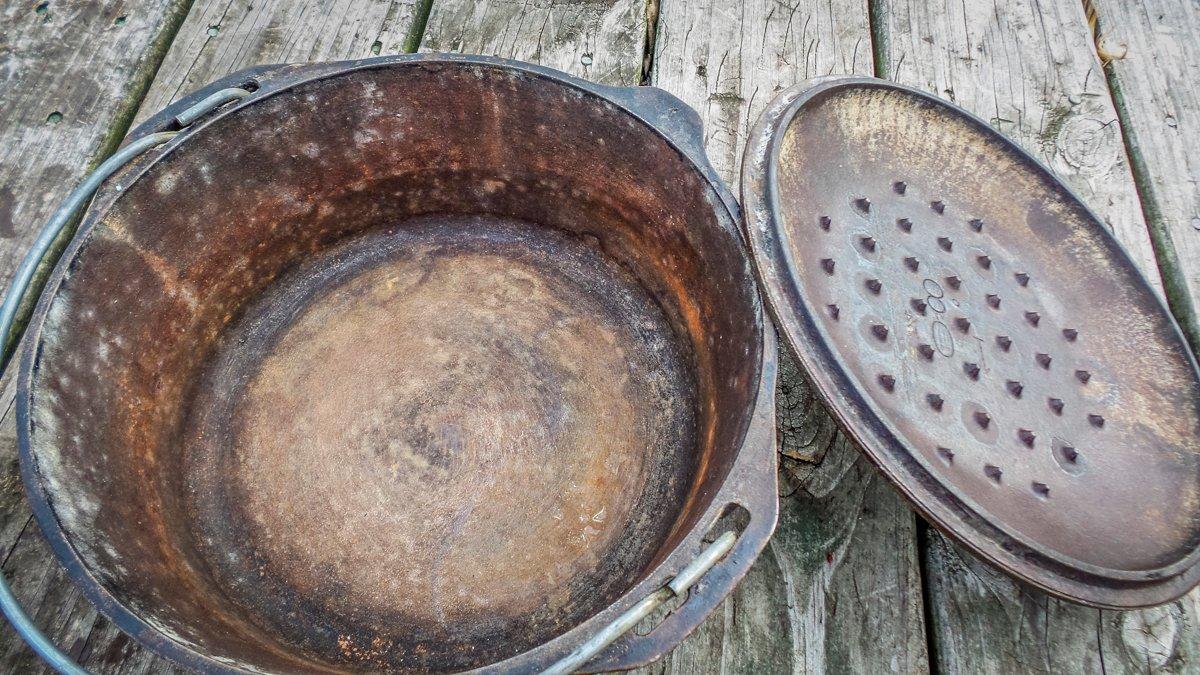Will washing your iron skillet with soap really ruin it? What should you do with a rusty Dutch oven? Read this to find out
Cast-iron cookware has been around since about 220 A.D. By the 16th century, Europeans were making and using cast-iron pots on a regular basis. In 1707, Abraham Darby patented the sand-casting method of making pans that's still used today.
Even with today's plethora of non-stick materials and late-night super-pan infomercials, cast-iron pots and pans are seeing a resurgence with modern cooks. Everyone is figuring out what our grandparents knew: There isn't much you can't do with a well-seasoned, cast-iron pan in the kitchen.
If you are new to cast iron, or even if you have been using it for years, here are a few tips to help get the most out of your pans.
1. Preheat Them Before Starting to Cook
Cast iron is an outstanding heat holder, but it takes a while to get a nice, even heat throughout the pan. Start your pan over low heat a few minutes before you are ready to cook to start storing heat in the cast iron. Turn the heat up to desired temperature just before starting to cook.
2. Keep Your Pans Well-Oiled to Prevent Rust
To keep your seasoning in top condition, clean your cast-iron pans while they are still warm, and wipe them down with a very light coating of vegetable oil or shortening before storing. Never put away your cast iron pans while they are wet. Even well-seasoned pans can rust when put away wet.
3. Don't Overheat Your Pans
This goes more for campfires than kitchen use, but be careful to not overheat your cast-iron pans. Cook over coals instead of in the heart of a hot fire. While you probably can't get your pan hot enough to melt, you can get it hot enough to ruin your hard-earned seasoning (above 700 degrees or so) or warp the pan so that it will never again sit level on your cooktop.
4. Don't be Afraid to Clean Your Pans
Don't put them in a dishwasher and don't use bleach. Other than that, clean your pans just like you would any other cookware. A quick wipe down with a paper towel will suffice if there isn't a lot of stuck-on food. A stiff brush or rag with a bit of detergent is fine. Ignore the old wives' tail that you can't use soap on cast iron; a mild dish soap is fine and won't harm your seasoning at all.
For really stuck- or burnt-on food, try simmering water in the pan on the stovetop to loosen the debris. For heavy-duty cleaning, look at the many chain-mail-style cleaners on the market today. They do a remarkable job of removing any stuck-on bits from your pan.
5. Cook What You Want
Many think that highly acidic foods like tomato-based sauces are bad for your cast iron. Don't worry. As long as your pans are well-seasoned, even tomato or citrus-based recipes are fine. I routinely simmer spaghetti sauce for hours in our cast-iron Dutch ovens with no damage to the seasoning layer.
6. Don't be Afraid to go from Stovetop to Oven
To me, this is one of the best parts of using a cast-iron pan. You can sear on the stovetop, then move the entire pan to a pre-heated oven to finish. This cooking method works particularly well with meats or thick vegetables or potatoes. The stovetop sear builds a nice layer of flavor as the food's surface caramelizes, then slowly finishes cooking in the oven, often with a liquid for braising. Try this method the next time you make a potroast. Brown the meat first, remove it from the Dutch oven, then brown the vegetables and potatoes, and add the meat and some liquid of your choice (broth or beer both work). Place the lid on the pot and move it to the oven to slowly finish cooking.
7. Don't Cook Over too Much Heat
While cast iron can handle heat, cooking over too high a temperature can cause food to stick, even with a well-seasoned pan. Medium to medium-high temperatures and slower cook times will help prevent fragile foods like eggs or thin potato slices from sticking and tearing apart when you attempt to move them.
8. Strip and Re-Season when Needed
Cast-iron seasoning is tough. But it isn't indestructible. If the seasoning on your favorite pan starts to flake, or if the outside gets so crusty the pan won't sit level on a smooth surface, strip it down and start all over. You can strip a pan in the oven set on the self-clean cycle, but that much heat can damage your valuable pan. A better method is to place the cast iron in garbage bags (multiple layers of bags work best) and to coat it well with a spray-on oven cleaner containing lye (one popular brand claims to be an Easy Off for oven gunk). Seal the bags tightly, and place it in a warm spot for 24 to 48 hours. A sunny driveway or patio is perfect.
After the soak, don eye protection and a pair of rubber gloves (take care not to let the lye-based spray come into contact with bare skin or eyes), and give the pan a good rinse from the hose. Next, take the pan to the sink and scrub it with warm, soapy water. Rinse well and dry thoroughly.
To reseason the pan, coat it with vegetable shortening, bear fat, lard or vegetable oil. Place the pan upside down on a baking sheet and put it in a pre-heated oven at 375 degrees for one hour. After the pan cools, rinse with hot water and dry thoroughly with paper towels. Repeat the process if needed.
With today's resurgence in cast-iron use, many companies have introduced custom blends for seasoning pans. Lodge has a spray-on mixture designed for both seasoning a pan and maintaining that seasoning layer for years to come. Buzzywaxx, a company out of North Carolina, uses bee's wax from local beekeepers blended with a proprietary mixture of oils to form a seasoning puck that can be rubbed over raw cast iron for initial seasonings, or over seasoned cast iron for maintenance of a slick finish.

